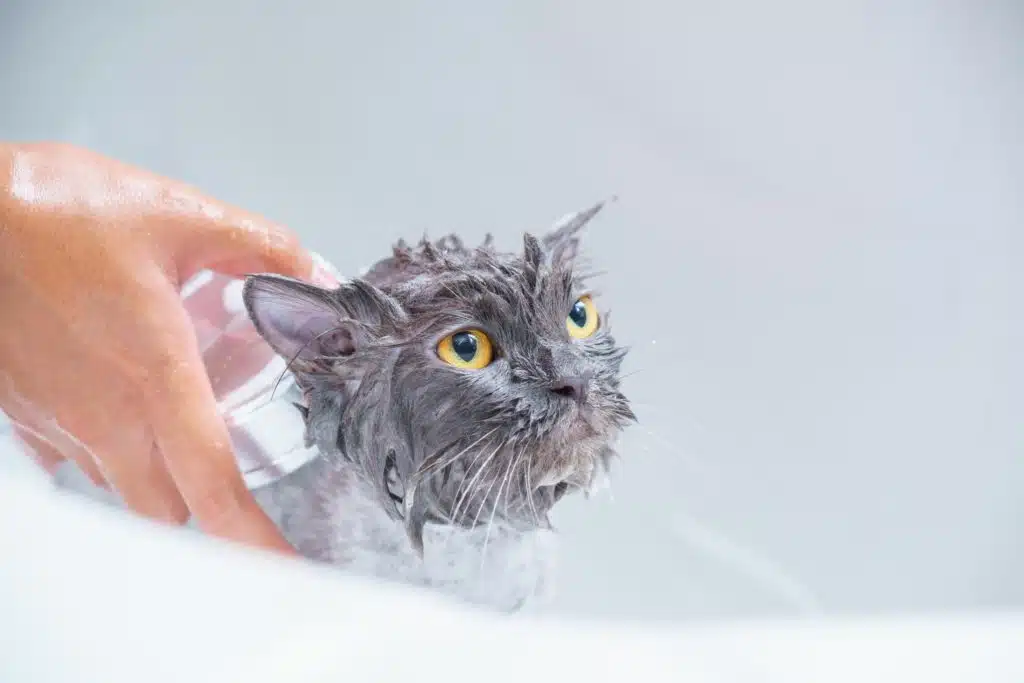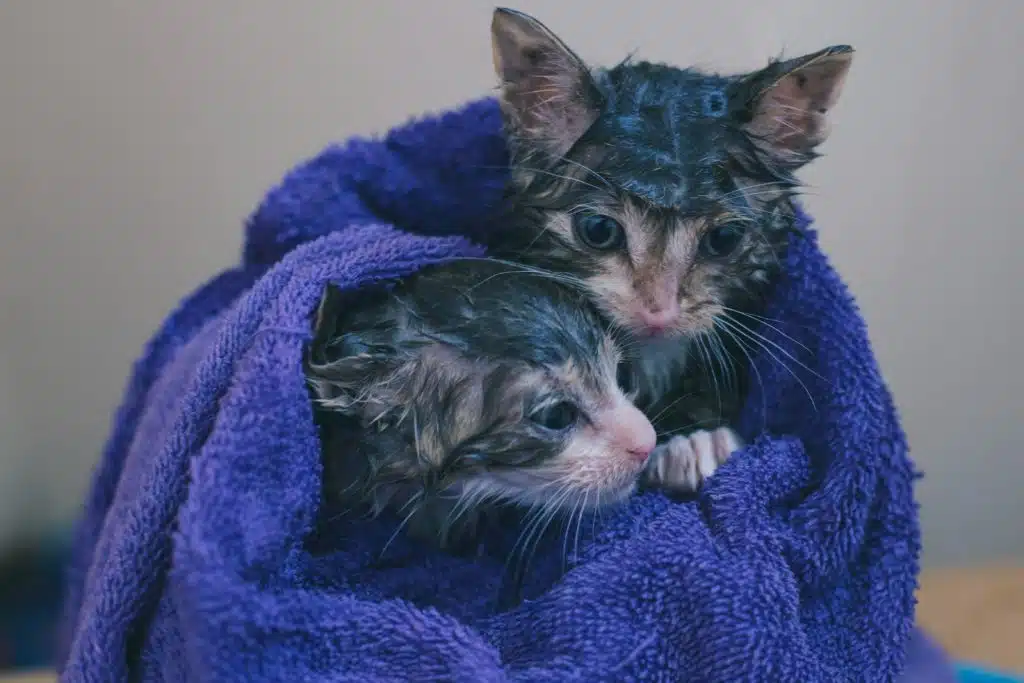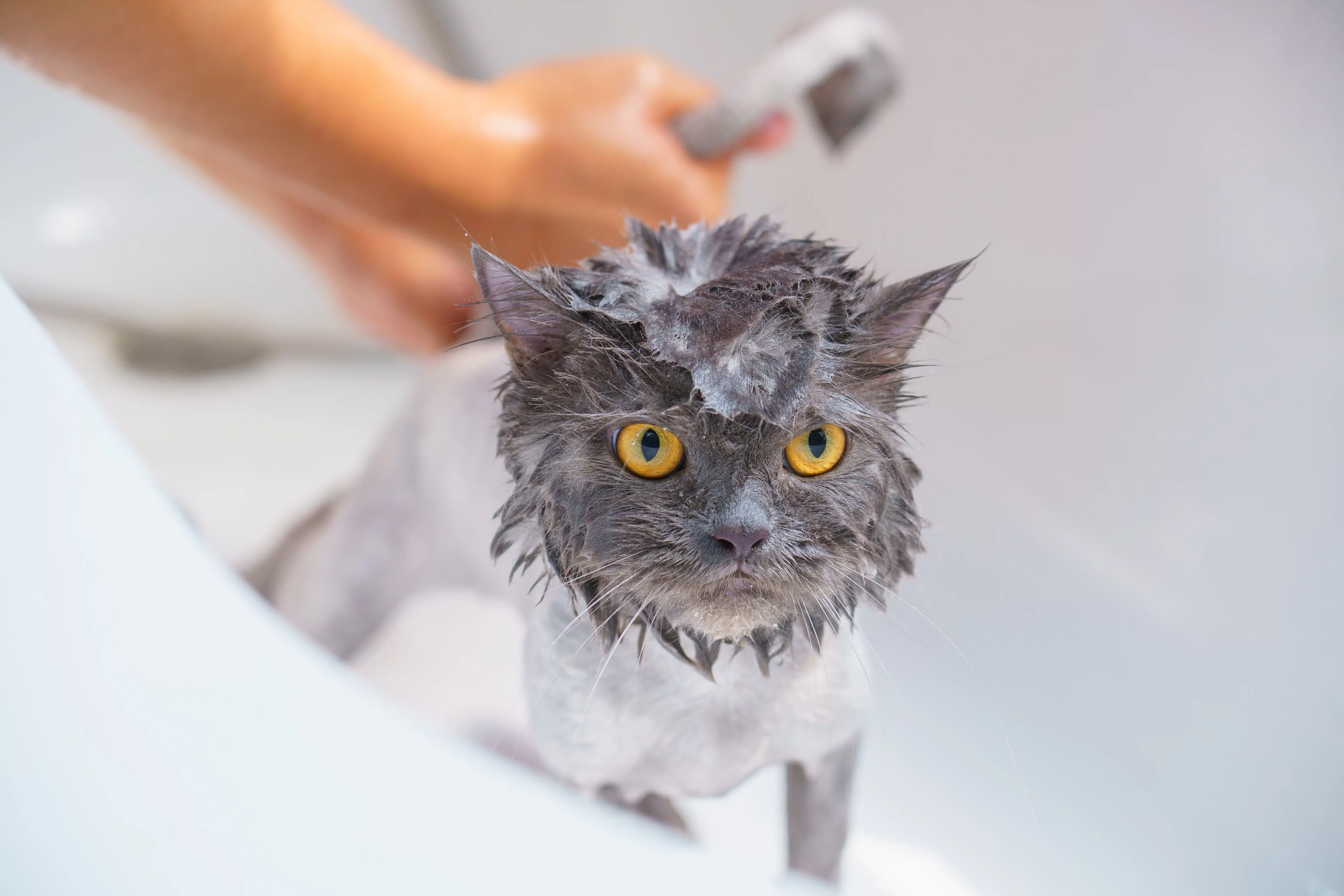Home » Blog » Pet » Pet Health & Safety » How to Bath a Cat That Hates Water
Categories
Tags
animal welfare
breed profile
buying a car
buying a pet
Car
car accessories
car care
car features
car insurance
Car safety
car sales
car service
cat
cat behaviour
cat body language
Cat Breeds
cat food
cat insurance
comprehensive car insurance
Dog
Dog Behaviour
dog body language
Dog Breeds
dog food
Dog Insurance
dog training
eco friendly cars
Kitten
New Car
pet accessories
pet activities
Pet Adoption
pet breeders
pet days of the year
pet fun stuff
Pet Health
pet insurance
pet parenting
Pet Safety
pet services
Puppy
rescue pets
road safety
road trip
safe driving
Recent Blog:
Facebook Posts
2 days ago
Growing old sometimes means we can’t take care of pets anymore. Find out some advice on what to do when this happens:![]()
![]() Senior Pet Parents – Contingency Plans for Your Pet – bit.ly/44bzwkS
... See MoreSee Less
Senior Pet Parents – Contingency Plans for Your Pet – bit.ly/44bzwkS
... See MoreSee Less
Senior Pet Parents' Contingency Plans for Pets
www.pd.com.au
Sometimes senior pet parents need more downtime. For older pet owners, this can be tricky to navigate if their dog or cat is full of beans and wants to4 days ago
Before you rev up the engine, let’s run through a checklist of things to do before starting your car. Not only do these steps ensure your safety (and that of others around you), but they also help in maintaining your vehicle's longevity.![]()
![]() Driving Tips: Your Checklist Before Starting Your Car -
... See MoreSee Less
Driving Tips: Your Checklist Before Starting Your Car -
... See MoreSee Less
Driving Tips: Your Checklist Before Starting Your Car
www.pd.com.au
Heading out for a drive? Hold up a second! Whether you're dashing off to work, running errands, or embarking on a road trip adventure, there are a few1 week ago
Are intestinal worms setting up camp in your dog’s gut without paying rent? Here’s how to spot the main culprits and get rid of them too:![]()
![]() Preventing, Identifying and Treating Intestinal Worms in Dogs - bit.ly/43YjCKu
... See MoreSee Less
Preventing, Identifying and Treating Intestinal Worms in Dogs - bit.ly/43YjCKu
... See MoreSee Less
Preventing, Identifying and Treating Intestinal Worms in Dogs
www.pd.com.au
Intestinal worms, such as roundworms in dogs are one of the least glamorous topics on the planet. These intestinal parasites that basically use our dogsIt’s important that you know when you need to bath your cat or kitten and when you shouldn’t. You may have noticed your cat is quite committed to personal grooming, so they don’t generally need a human to get out the cat shampoo and bath them.
Sometimes, however, things don’t go their way and they may need a little extra help with their personal hygiene regime. Especially if they have really long fur.
“If cats are bathed too often, they may lose essential oils from their fur, and it may even be a traumatic experience for them,” AnimalWised advises.
Of course, a cat might be tolerant of water. “The relationship of cats with water depends on several factors,” it continues, “including whether you have accustomed your cat from a young age, if it has had a negative experience with water, or if you really need to wash it for some particular reason.”

Table of contents
How often should you bath a cat or kitten?
Sometimes it’s necessary to bath your favourite cat or kitten.
“If they’ve rolled in something that they can’t wash off themselves,” Purina notes, “or they have long hair which has become matted, a bath might be a good idea.”
Remember that clever kitties self-groom a few times every day and lick up any residue they can reach. So, it’s important to respond promptly and appropriately if you notice their coat is soiled with more than a bit of dust they just rolled in.
If you’re concerned that the “something” on their fur might be toxic or corrosive (like battery acid or pesticide), treat it as an emergency. Restrain your cat so they can’t lick the area (try a towel around the body or a head cone) and go directly to the vet. Remember to call the clinic en route so they can prepare for your arrival.
If it’s not a vet emergency, read on to discover how to bath a cat in a calm, collected way that keeps them as stress-free as possible.
Check your cat insurance while you’re at it, to see what you have cover for. For example, if your kitty gets ill due to ingesting whatever is on her fur. Also, if you’re a first-time cat owner, be sure to refer to our helpful article: The Must-Know Kitten and Cat Health Checklist.
What can I wash my cat with?
Buy a specialised cat shampoo like John Paul’s Pet Oatmeal Cat Shampoo (pH balanced and gentle on the skin) to be on the safe side. Ideally, cat shampoo should be mild-strength with no chemicals and perfume-free.
Ensure that your cat shampoo does not contain ✔️artificial dyes, ✔️parabens, ✔️sodium laurel sulphate, ✔️ petrochemicals.
How to bath a cat that hates water
Take on these six steps to success with bathing a cat:
- If your puss dislikes water, you need to stay calm and be patient. Scolding and rough handling will only aggravate the situation. A cat can also sense how you feel and pick up on your negative attitude, whether they’re a pedigree Toyger cat or a many-breed mix.
- Positive reinforcement is the key to any successful training or experience. Your cat needs to feel supported and encouraged. You can achieve this by stroking your cat’s fur and petting it throughout the process.
- Put your cat in an empty sink or bathtub and let it play with its favourite toy or give it treats to get used to the water. Here, the goal is to associate the sink/bath with a positive experience.
- Make sure you have all the washing supplies you need within reach, including brushes, cat shampoo, and towels.
- It is better to dry brush your cat before bathing to remove tangles and to also reduce the workload during the bath.
- Your kitty can then be shampooed thoroughly using a wet washcloth or with your hand and rinsed with water from a bowl or jug. The key is patience.
This video shows how to do it:
For cats that can handle a bit of water
You’re one step ahead of the total newbies if your cat will tolerate some water. Here are the steps you can take:
- Brush kitty properly first and clip the claws safely if you can. Avoid the pink, living part of the claw that feels pain and will bleed!
- Place your washing basin in an area without a draft, at waist level for easy access.
- Put water in it, deep enough to scoop up in your hand or a small container, but not so deep that kitty feels she has to swim.
- Water should be as near to a cat’s body temperature as possible. Try the elbow test. If it’s just comfortable, you’re good to go. Do not use very warm or cold water.
- Close the doors and windows in case of attempted escape (at which point you should stop as it can become severely distressing).
- Clear the area and prepare to get wet.
- A non-slip mat will help everyone – one under your feet and one under your cat’s.
- Reassure low tones and lots of touch. It takes time to teach a kit new tricks!
- Move slowly. Let your pet find a position that’s comfortable and stable. Paws can slip on wet surfaces.
- Use a vet-approved, pet-safe cat shampoo. Avoid head, mouth and eyes.
- After soaping their body, rinse them thoroughly in fresh water that’s the same temperature as the washing water. If you don’t, they might ingest shampoo or conditioner residue when they next self-groom
- Dry your cat immediately. Towel drying is usually best; a hairdryer may be quicker, but you might burn their skin without realising it and upset them with the noise of it.
- Give your cat a treat after it’s all over to show them everything is fine again and they’re a good (clean) boy/girl.
When it’s NOT a good idea to give a cat or kitten a bath
Don’t wash a cat when…
- it’s a tiny kitten (especially one that has been orphaned or abandoned). Tiny kittens are hypersensitive, and water can alter their body temperature. The Spruce Pets suggests a kitten must be at least 4 weeks old before you bathe it.
- it’s seriously ill or in questionable health. A very old and frail cat may not cope with a change in temperature. If you find a stray or a feral cat in a bad way, it’s better to let a vet handle it from the start.
- there’s a wound on your wonderful one. Even if it’s already stitched up and kitty is on antibiotics for any potential infection. Moisture can interfere with the healing process. In instances like these, it’s wiser to let a pet medical professional manage the situation.
- your cat is well and without injury but reacts extremely or violently to your attempts to bathe. If they leap out of the water, makes strange sounds or hisses continuously, they’re not coping psychologically, and you should cease immediately. Chat to your vet to find out if there may be underlying causes (like an injury you can’t see) or to a pet behaviourist for professional advice.

Do cats like showers?
The answer is: Not really…
Cats generally don’t like getting their feet wet. That is, unless they’re rare water babies like the Bengal cat and Turkish Vans. Showers may not be as appealing to them as they are to you. In fact, cats come equipped with everything they need to take care of themselves without the help of a shower.
However, using a shower head to bathe your cat works pretty well. One hand can hold them in place and the other can rinse out the soap with the shower head. It can, however, be an inconvenient way to wash a cat if the shower head isn’t flexible, as it can cause their ears to get wet.
A cat’s ears are extremely sensitive, and water can alter the delicate pH balance and lead to infections. Instead of sticking their head under the shower, use a moist washcloth to wipe out the dirt.
Check out our related articles if you’re as crazy about kittens as we are or just care about giving your kitten the best experience possible:
- How to Train a Kitten to Use a Litter Box
- Introducing Your Kitten and Cat for the First Time
- How to Stop a Kitten Scratching Furniture
- 5 Things New Kitten Parents Need to Know
How to bath a kitten
For this you really are dipping your toe in the water with cat bathing. Go slow and follow these steps carefully well before you want your cat to have a full bath from start to finish.
But first, make giving your kitten a bath easier by teaching it to like water. To get your kitten used to water, add some water to wet your kitten’s paws. When your kitten’s paws become accustomed to the water, let them play in the water with a toy they like. A kitten that stays calm is ready for a bath.
Essential steps
- Make sure you have everything you need before you begin. As a kitten is usually impatient during a bath, you should do it as quickly as you can.
- Young kittens can’t regulate their body temperature, so keep the bathroom warm. Steam up the bathroom by running a hot shower or by turning down the AC.
- Keep your kitten’s face away from running water! To gently clean your kitten’s face and ears, use a clean, wet rag.
- To acclimatise them, fill the tub with a few inches of water. If there’s a lot of water in the tub, your kitty might get scared. Put just enough water in your cup or pitcher to cover your kitten’s knees.
- You can drizzle water over your cat by dipping your cup into the water already in the tub. Fill a cup with warm water and keep pouring it over your kitten’s coat until it is totally soaked.
- Hold the kitten with one hand, lather the cat shampoo with the other.
- Make it easier to wash away the shampoo by gently massaging your kitten as you rinse.
- Focus on calming your kitty and remember they’re just scared. If you’re calm, they will be too.
- To speed up the drying process, rub the towel into your kitten’s fur. You should keep your kitten as snug as possible since your fur kid is likely to shiver due to the cold.
Extra tip
Hold the kitten by its scruff while cradling its bottom. A kitten’s scruff is the loose skin on the back of its neck. It’s natural for them to relax because they’re used to their mother carrying them around by their scruff.

Absolute no-no’s when you bath a cat or kitten
You’re almost there with knowing everything about giving a cat a bath or a simple wash… Just read these things to avoid and you’re a pro (in theory, anyway)!
- Never use human shampoo or human conditioner on a cat. The skin pH levels are different between cats and people and using liquids meant for humans on a cat can result in a nasty skin reaction. Kitty is uncomfortable enough already. Cat shampoo and conditioner all the way.
- Never spray your cat in the face. You can try a squeezed, damp cloth instead.
- Never ever push their face below water. Water could get trapped in the lungs or throat (partial drowning), get soapy water in their eyes or ears or completely freak them out so they lash out.
- Never put cotton wool or anything else inside their ears (to keep them dry). Your cat will shake water out of them naturally (and you aren’t ever going to put their head underwater anyway). Cotton wool can get stuck and require extraction, or trap water behind it, and lead to ear infections.
- Do not shout or scold kitty. This will add to the drama for both of you and give them bad associations with the wash process. It’s your responsibility to guide your cat, support them and help them adjust to this strange new experience.
What you can do instead
Clean the soiled area only. That is, if it doesn’t cover a large part of the body. If your cat’s particularly stressed around water, rub gently with a damp cloth instead. Make sure you use pet-safe cat shampoo and wipe the area down with the rinsed cloth a few times to remove residue. Kitty might even allow you to pour water over a small area without freaking out.
Or, you could schedule a visit to a professional groomer who’s trained to do this gently and effectively with the least stress for your cat.
Whatever you choose, wait until any illness or wounds heal if your cat isn’t 100% healthy. And speaking of health… have you thought about safeguarding your pet’s with cat insurance? Take two minutes and click the button below to discover how cost-effective PD Insurance plans are.
Share On:




